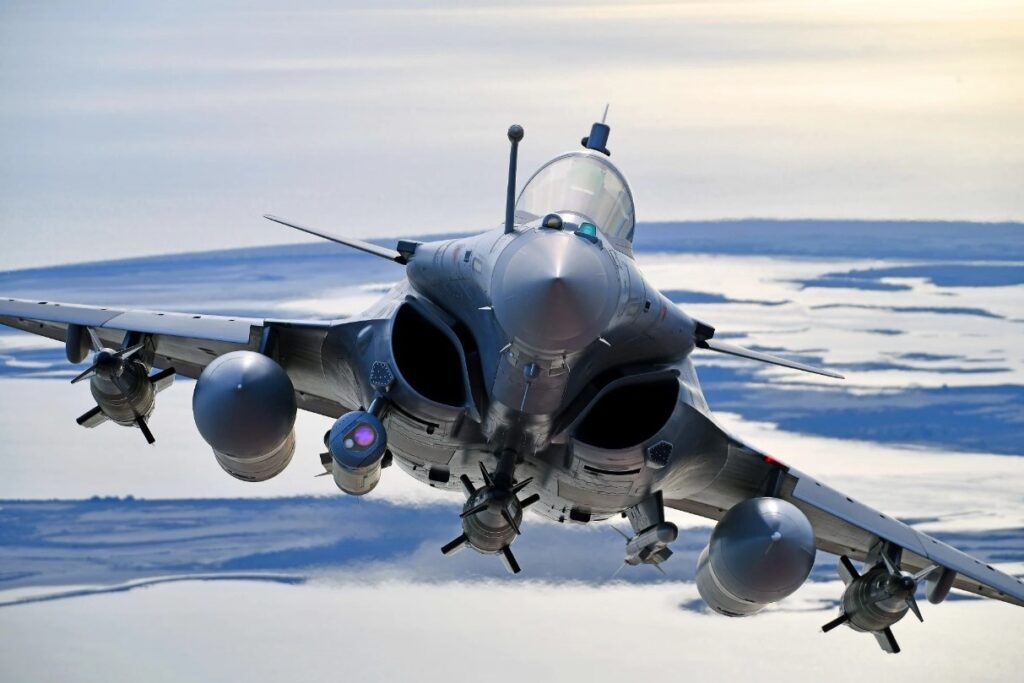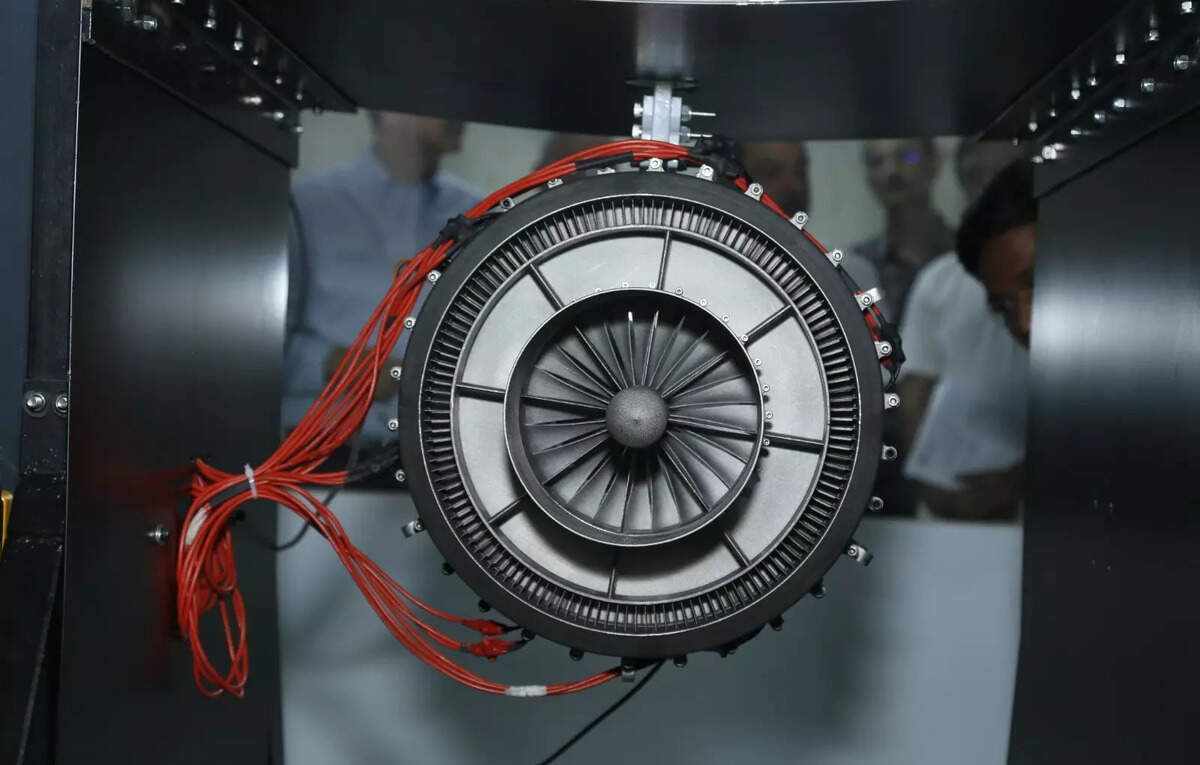SOURCE: AFI

In a recent interview with Sputnik India, Air Marshal RGK Kapoor (Retd.), the Indian Air Force (IAF) spokesperson during the 2019 Balakot airstrike, reaffirmed India’s claim of shooting down a Pakistani F-16 during the aerial skirmish that followed. Kapoor’s statement, “The weapons went where they were supposed to go, and even if Pakistan doesn’t accept it, the F-16 was shot down,” underscores the IAF’s confidence in its account of the February 27, 2019, dogfight over the Line of Control (LoC).
The Balakot airstrike, conducted on February 26, 2019, saw IAF Mirage 2000 jets target a Jaish-e-Mohammed (JeM) terrorist training camp in Balakot, Pakistan, in retaliation for the Pulwama attack that killed 40 Indian CRPF personnel. The strike escalated tensions, leading to a Pakistani counterstrike the following day. On February 27, the Pakistan Air Force (PAF) attempted to target Indian military installations, prompting a swift response from the IAF.
Continue readingSOURCE: AFI

In a significant escalation of electronic warfare (EW) along the Indo-Pak border, India has rapidly deployed high-frequency jamming systems designed to disrupt Global Navigation Satellite System (GNSS) signals, including GPS, GLONASS, and BeiDou, as reported across multiple posts on X on April 29, 2025. These systems, strategically positioned near the Line of Control (LoC) in Jammu and Kashmir, aim to degrade Pakistan’s situational awareness, navigation accuracy, and precision-guided munitions capabilities, further straining already tense relations between the two nuclear-armed neighbors.
The deployment follows a series of recent provocations, including ceasefire violations along the LoC, clashes in Kupwara, and a deadly attack on April 29, 2025, known as the Pahalgam massacre, where 26 tourists were killed by The Resistance Front, a shadow group of the Pakistan-based Lashkar-e-Taiba. India’s decision to scrap the 2021 LoC ceasefire agreement in response has set the stage for this aggressive EW strategy. By targeting GNSS signals, India seeks to impair Pakistan’s military operations, which heavily rely on satellite navigation for drone navigation, troop movements, and precision-guided munitions like the Babur missile.
Continue readingSOURCE: AFI

Tata Advanced Systems Limited (TASL) is set to make a significant impact at the Defence Exhibition Athens (DEFEA) 2025, taking place from May 6th to 8th in Athens, Greece. The company announced its participation via posts on X, inviting attendees to visit its booth at Hall 3, C-24, where it will display its cutting-edge defense and aerospace technologies. Among the highlights are the Advanced Towed Artillery Gun System (ATAGS), the Wheeled Armoured Platform (WhAP) 8×8, and the ALS-50, a vertical take-off and landing (VTOL) unmanned aerial vehicle (UAV) system, showcasing India’s growing prowess in indigenous defense manufacturing.
The ATAGS, developed in collaboration with the Defence Research and Development Organisation (DRDO), is a 155mm/52 caliber howitzer designed to provide superior firepower for the Indian Army. Known for its advanced automation and ability to operate in diverse terrains, ATAGS has already completed successful firing trials and is positioned as a cornerstone of India’s artillery modernization. Its presence at DEFEA 2025 signals TASL’s intent to market this system globally, especially after securing export deals like the 150 WhAP units to the Royal Moroccan Armed Forces in 2024.
Continue readingSOURCE: AFI

Kanpur-based MKU Limited has secured a significant win with its Kavro Ballistic Helmets being selected by SWAT teams, as announced in posts on X on April 29, 2025. Designed to match the intensity of SWAT operations, the Kavro series—already in service with the Indian Army and undergoing trials abroad—brings combat-proven protection and cutting-edge features to elite law enforcement units. With India pushing for self-reliance in defense manufacturing, this selection underscores MKU’s growing influence in both military and paramilitary sectors, though it also raises questions about whether domestic production can meet the rigorous demands of global tactical teams.
The Kavro helmets, notably the high-cut models like the Kavro Doma 360 and MCH-126 T, are engineered for high-stakes environments. Their high-cut shell design enhances situational awareness by providing an unobstructed field of view and compatibility with communication headsets, crucial for SWAT teams operating in dynamic urban settings. Weighing as little as 1.45 kg in the high-cut combat (HCH) configuration, the helmets prioritize mobility without sacrificing protection. They offer uniform defense against high-velocity threats, including AK-47-fired 7.62×39 mm mild steel core (MSC) bullets, as well as 7.62×51 mm and 5.56×45 mm NATO rounds, with a back face signature (BFS) of less than 20 mm. This low BFS minimizes behind-helmet blunt trauma (BHBT), reducing the risk of concussions—a critical factor in close-quarters combat where every second counts.
Continue readingSOURCE: IDRW.ORG

India is set to commence production of the F414 jet engine, developed by General Electric (GE), within the country by the end of 2025, according to Defence Secretary Rajesh Kumar Singh. Speaking at a defence conclave, Singh highlighted that negotiations with GE Aerospace for technology transfer and manufacturing are in advanced stages, with commercial discussions nearly finalized.
The F414 engine is critical for powering the indigenous Light Combat Aircraft (LCA) Mk2 and the fifth-generation Advanced Medium Combat Aircraft (AMCA), key components of India’s push for self-reliance in defence manufacturing. The manufacturing line will be established under a $1 billion deal signed in August 2023 between GE Aerospace and Hindustan Aeronautics Limited (HAL), which includes an 80% technology transfer for the engines.
Continue readingSOURCE: IDRW.ORG

In a landmark step toward strengthening India’s indigenous defense manufacturing, Caracal, a UAE-based small arms manufacturer under the EDGE Group, partnered with Hyderabad-based ICOMM Tele Limited to inaugurate a state-of-the-art small arms production facility in Hyderabad on April 22, 2025. This venture, aligning with India’s ‘Make in India’ and ‘Aatmanirbhar Bharat’ initiatives, aims to produce advanced firearms locally, reducing reliance on imports and enhancing India’s strategic autonomy.
The facility, a testament to growing UAE-India defense cooperation, is set to manufacture a comprehensive portfolio of Caracal’s small arms, including assault rifles, sniper rifles, and pistols, catering to the Indian armed forces and potentially regional markets. This development comes amid heightened regional tensions, including a recent terror attack in Jammu and Kashmir, underscoring the urgency of self-reliant defense capabilities.
Continue readingSOURCE: AFI

In a report aired by Pakistan’s state-run broadcaster PTV News, citing unnamed security sources, it has been claimed that four Indian Air Force (IAF) Rafale fighter jets were seen “patrolling” over the Kashmir region near the Line of Control (LoC” earlier this week. The report alleged that while the Indian aircraft did not violate Pakistani airspace, their presence triggered a swift response from the Pakistan Air Force (PAF).
“Aircraft of the PAF immediately spotted the Indian fighter jets,” the report said, further alleging that “as a result of PAF’s diligent action, the Indian Rafale jets panicked and were forced to flee.”
Continue readingSOURCE: AFI

In a groundbreaking development for sustainable aviation, SiriNor, a deep-tech aerospace startup based in India and Norway, has successfully completed ground testing of the world’s first all-electric jet engine, reaching Technology Readiness Level 6 (TRL-6). The milestone test, conducted in Pune on April 29, 2025, marks a pivotal moment for clean aviation technology, with the company now setting its sights on disrupting the $100 billion global jet engine market by 2030.
SiriNor’s proprietary propulsion system promises emission-free air travel, addressing one of the aviation industry’s most pressing challenges: reducing its carbon footprint. Traditional jet engines rely on fossil fuels, contributing significantly to greenhouse gas emissions, but SiriNor’s all-electric design leverages advanced battery technology and electric propulsion to eliminate emissions entirely. The TRL-6 achievement indicates that the system has been validated in a relevant environment, a critical step toward eventual certification and commercial deployment.
Continue readingSOURCE: AFI

As tensions between India and Pakistan escalate following the April 22, 2025, Pahalgam massacre and subsequent military posturing, unverified reports have surfaced on X claiming that a foreign private military company (PMC) named Delta PMC, allegedly composed of ex-SAS (British Special Air Service) operators, has struck a deal with the Pakistan Army.
According to these posts, the PMC would intervene if Indo-Pak tensions escalate into a war-like situation, with a specific theory suggesting that these ex-SAS operatives are tasked with protecting Pakistani generals and their families due to a lack of trust in Pakistani soldiers. While these claims appear to be speculative and potentially propagandistic, they highlight the complex dynamics of trust, security, and foreign involvement in the region’s volatile military landscape.
Continue readingSOURCE: AFI

The funeral of Indian Navy Lieutenant Vinay Narwal, who was tragically killed in the Pahalgam terror attack on April 22, 2025, has sparked a heated controversy on social media platform X. A video showing women naval officers carrying Narwal’s casket during his military honors in Karnal, Haryana, has drawn sharp criticism from some quarters, igniting a broader debate about feminism, equality, and the role of women in the armed forces. The 26-year-old officer was among 26 victims of the attack, which occurred while he was on his honeymoon in Jammu and Kashmir’s Baisaran Valley, just days after his wedding on April 16.
The controversy began when an X user, identifying as a former army officer named Lt Col Sumit Mohan Garg, posted the video with a scathing caption: “#Feminism and #Equality don’t work in a practical world. Who had the bright idea to showcase feminine power on such a sombre occasion and disrespect the departed soul. It also underlines the unsuitability of women in Armed Forces, where physical capabilities are critical.” The post, dated April 28, 2025, quickly gained traction, with some users echoing Garg’s sentiments. Another post by a user named @bhakti_sagara on April 29 called the decision “absolute stupidity,” questioning the practicality of women officers carrying the coffin and arguing that it highlighted inherent differences between men and women rather than equality.
Continue readingSOURCE: RAUNAK KUNDE / NEWS BEAT / IDRW.ORG

The Aeronautical Development Agency (ADA) has initiated a significant upgrade to the cockpit of the Light Combat Aircraft (LCA) Mk1, focusing on modifications to accommodate the advanced Right Hand (RH) Console designed for the LCA AF Mk2. This project, detailed in a recent Statement of Work (SOW), aims to enhance the cockpit’s functionality and ergonomics, aligning it with the operational requirements of the next-generation LCA AF Mk2.
The LCA AF Mk2 cockpit is engineered for optimal pilot interaction, providing ample space for the ejection seat while housing controls and displays for primary and secondary systems. The RH Console, a critical component, is designed to integrate the side stick controller and various switches and panels primarily used during ground operations. To evaluate this console’s performance, ADA plans to fabricate and install it in the existing LCA Mk1 cockpit at the Real-Time Simulator (RTS) Facility at the Aeronautical Development Establishment (ADE).
Continue readingSOURCE: RAUNAK KUNDE / NEWS BEAT / IDRW.ORG

In a landmark development for India’s defense sector, French aerospace giant Dassault Aviation has announced plans to establish a production facility for Rafale fighter jet fuselages in India, alongside Maintenance, Repair, and Overhaul (MRO) facilities for the aircraft’s engines, sensors, and weapons. This initiative, formalized as part of a €7 billion deal signed on April 28, 2025, for 26 Rafale-Marine fighters for the Indian Navy, marks a significant step toward India’s vision of self-reliance under the “Make in India” initiative.
The move not only strengthens India-France defense ties but also positions India as a potential hub for Rafale production and maintenance, with implications for regional security and global defense markets. Here’s a detailed look at what this means for India and the broader geopolitical landscape.
Continue readingSOURCE: RAUNAK KUNDE / NEWS BEAT / IDRW.ORG

In a significant advancement for India’s aerospace and defence capabilities, the Defence Research and Development Organisation (DRDO) has successfully developed and manufactured high-pressure turbine blades (HPTBs) for a small indigenous turbo-fan engine, marking a crucial step towards self-reliance in critical aero engine components.
Published in the Defence Science Journal (Vol. 73, No. 2, March 2023), the study titled “Realization of High Pressure Turbine Blades of a Small Turbo-Fan Engine through Investment Casting Process” details the intricate process behind the creation of aeronautical-grade HPTBs by scientists from DRDO’s Defence Metallurgical Research Laboratory (DMRL), Hyderabad, and Gas Turbine Research Establishment (GTRE), Bengaluru.
Continue readingSOURCE: AFI

India’s signing of a €7 billion deal for 26 Rafale-Marine (Rafale-M) fighter jets on April 28, 2025, to equip the Indian Navy’s INS Vikrant aircraft carrier has reignited a long-standing debate about the aircraft’s compatibility with India’s existing carriers. The Rafale-M, with a wingspan of 11 meters and non-folding wings, faces significant challenges fitting into the elevators of INS Vikrant (10 meters wide) and INS Vikramaditya (9.9 meters wide).
This mismatch has sparked discussions on social media platforms like X and among defense analysts, with many arguing that the Rafale-M’s deployment is better suited for the planned Indigenous Aircraft Carrier-2 (IAC-2), which is expected to feature wider elevators. This article explores the technical constraints, operational implications, and strategic considerations surrounding this debate, while addressing potential solutions and the role of IAC-2.
Continue readingSOURCE: AFI

As India-Pakistan tensions reach a boiling point following the April 2025 Pahalgam terror attack, India appears to have concluded that the fragile calm along the Line of Control (LoC) in Jammu and Kashmir is unsustainable. Pakistan’s suspension of the Shimla Agreement, threats to withdraw from the Tashkent Agreement, and aggressive rhetoric over India’s suspension of the Indus Waters Treaty (IWT) signal a potential slide toward conflict.
However, India’s military planners are increasingly focusing on the International Border (IB) opposite Pakistan’s Punjab province, rather than the LoC, as the key theater to disrupt Pakistan’s strategic calculus. By unleashing artillery barrages and mobilizing forces along the Punjab border, India could exploit the vulnerabilities of Pakistan’s Punjab-dominated military elite, sowing panic and undermining the Pakistan Army’s cohesion.
Continue reading